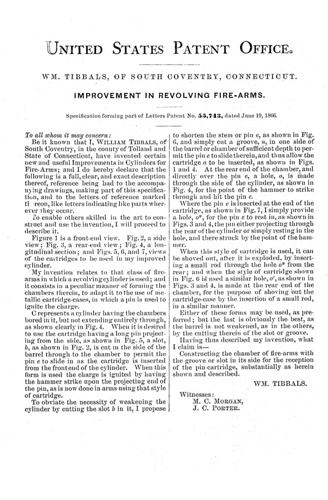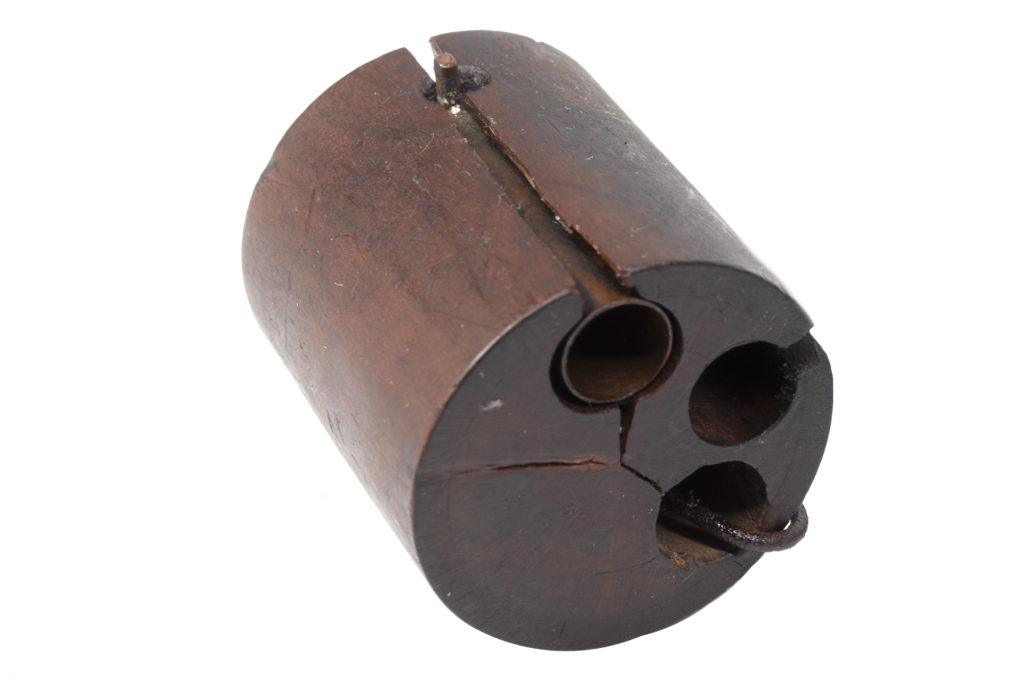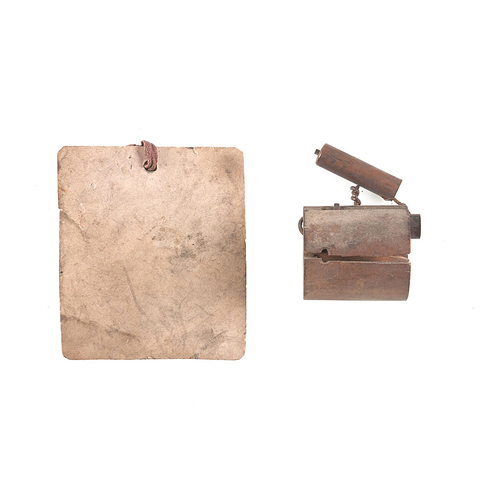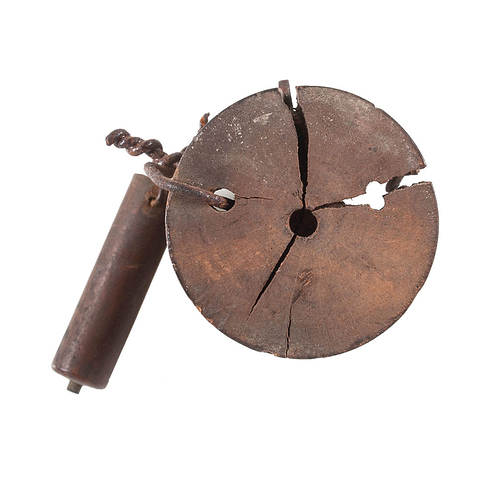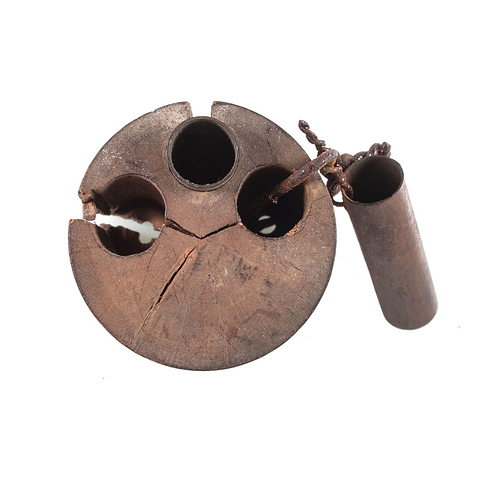One of the most famous American ammunition manufacturers was William Tibbals. William Tibbals was the partner in the company, Crittenden & Tibbals, who supplied mostof the rimfire ammunition during the American Civil War.
Part of what made Crittenden & Tibbals so successful was their early relationship with firearms manufacturers such as Smith & Wesson. Crittenden & Tibbals made some of the earliest rimfire cartridges for Smith & Wesson, Bacon, Spencer and others. I am sure that within their relationship with Smith & Wesson they were well aware with the issues of many people trying to circumvent or infringe on the Rollin White patent that Smith & Wesson had an exclusive license to use; especially since some of their main customers were some of the infringing companies.
The Rollin White patent was actually a fairly ridiculous pistol design that would have unlikely ever been made. However, there was one interesting feature about it that Daniel B. Wesson was interested in; the concept of a revolver with a bored-through cylinder which allowed metallic cartridges to be inserted from the back. This concept already existed with pinfire revolvers in Europe but it was the first time the concept was patented in the United States. So from 1855, through the next 17 years, anyone who wanted to make a revolver that loaded from the back had to go through Smith & Wesson.
During this time period there were a few notable designs that effectively evaded this patent such as the cupfire, teatfire and thuer cartridges. The revolvers that used these were designed to be loaded from the front of the cylinder and have a back that was not bored all the way through.
On June 19, 1866, William Tibbals was granted U.S. Patent number 55,743 for a revolving firearm improvement that evaded this Rollin White patent. His design covered 3 types of cartridges that could be loaded from the front of the cylinder; a pinfire cartridge, a horizontal pinfire cartridge and a pinfire cartridge with a much shorter pin.
His design for the pinfire cartridge put a slit through the cylinder so the cartridge could slide all the way through from the front. For the shorter pin version, he put just a grove so it would not weaken the cylinder as much.
The horizontal pinfire example would have its pin stick out the back (where the wire is in the following picture) where a centerfire style hammer would hit it. There was also a hole behind the pinfire example so a rod could push out the spent case.
This original patent model that I acquired shows all three ways a cartridge could work with this design and has example of two of the cartridges. There are no known examples of this ever being actually made for consumers.
During this time period of ever-changing firearms and ammunition, any and every idea was worth patenting!
Originally published at: https://freemycollection.com/?p=899&title=w-tibbals-revolving-firearms-patent

